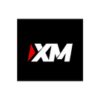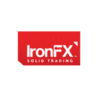Over 70% of MENA banks adopt ESG plans, signaling a transformative shift in the industry’s approach.
The importance of environmental, social, and governance (ESG) in the banking industry in the Middle East and North Africa (MENA) is being demonstrated by MENA banks. According to EY, almost three out of every four banks that were examined have already created ESG plans.
Ahead of COP28 in the United Arab Emirates (UAE) on November 30, the first-ever EY ESG MENA Bank Tracker has been made available. It monitors the overall performance of the top 20 banks in the Kingdom of Saudi Arabia, Bahrain, Jordan, Kuwait, Morocco, Qatar, and the United Arab Emirates throughout the MENA region. A report titled “Bridging the Gaps: ESG Governance to Climate Action” included the tracker’s analysis.
EY seeks to offer analysis that banks may use to compare themselves to industry peers. Additionally, it is intended to educate regulators and policymakers in the area. Particularly with respect to the adjustments that could be necessary to enable banks to actively support the region’s net-zero commitments.
Climate-related factors
According to the results, almost 80% of the banks questioned had not released a climate commitment statement. However, only 60% of respondents claim to have performed materiality assessments. The study also shows that fewer than 20% of banks have policies in place to mitigate climate risk. Furthermore, just 5% have developed strong ESG frameworks supported by KPIs.
The majority of MENA banks do not appear to be incorporating sustainability concerns into their overarching business plans, according to the EY ESG MENA Bank Tracker’s findings. especially the changing climate.
“Prioritizing climate risk mitigation is crucial for banks, and the integration of ESG risk frameworks and policies into their risk management strategies needs to be accelerated,” says Charlie Alexander, leader of EY MENA financial services. Furthermore, closing the implementation gap at the board level for ESG strategies is crucial.
“Banks in the area have a chance to lead the way in implementing fully transparent ESG policies with well-defined roles, accountability, and strong measurement systems. While the MENA region can benefit from proactive support from regulatory agencies to strengthen and evolve their ESG strategy, there is still room for improvement in terms of alignment with global best practices.
Growing selection of sustainable finance products
According to the survey, banks that are leading the way in developing sustainable financial products and services are also those who are making headway in integrating ESG climate risk into their business strategies. Forty-five percent of the banks studied have implemented sustainable finance frameworks, which are usually associated with social and environmental factors.
A large number of these frameworks are supported by global standards. For instance, the Sustainability-Linked Bond Principles (SLBP), Social Bond Principles (SBP), and Green Bond Principles (GBP) of the International Capital Market Association (ICMA).
According to the survey, MENA banks outperform international banks when it comes to offering business and institutional clients sustainable finance solutions. Seventy percent of banks provide loans for renewable energy initiatives. Furthermore, 65% issue bonds related to sustainability, social justice, or the environment. Moreover, 15% of respondents finance green repo transactions, while 40% offer loans with a focus on sustainability.
On the other hand, sustainable retail bank products are given less attention. The most common type of credit offered by 35% of banks is the green or hybrid car loan. Furthermore, 10% of banks offer green mortgage loans and 25% of banks offer solar loans.
“It’s encouraging to see many banks in the region expanding their offerings of sustainable finance products, particularly in key markets where product innovation is thriving,” says Jessica Robinson, leader of EY MENA’s sustainable finance division. However, banks must move quickly to integrate climate risk assessments into their extensive risk management frameworks, given the MENA region’s increased susceptibility to the consequences of climate change.
“The ESG MENA Bank Tracker underscores that significant financial institutions have opportunities to enhance their comprehension, handling, and smooth incorporation of climate risk evaluations into their commercial plans and governance frameworks.”
Requirements for significant ESG integration
EY has used the poll results as part of its analysis to identify seven priority areas that might help banks and regulators with the creation and implementation of ESG policies.

ESG Governance and Strategy
Banks ought to integrate ESG into their larger commercial strategy and business plans in order to concentrate on ESG strategic thinking and direction. They ought to support this with strong governance, supervision, and progress on ESG implementation, addressing the possibilities and dangers associated with ESG. Clear roles and duties, accountability across business lines, and a well-resourced sustainability team with the necessary expertise are necessary to build an efficient governance structure or framework.
Increasing the use of sustainable funding
Banks in the area should consider extending the range of products they offer to corporate customers by include carbon-specific tools, sustainable repos, sustainable trade and supply chain finance, and ESG advice and underwriting services. They can provide retail clients with ESG risk tools, green deposits, sustainability-linked loans, and sustainable cards in the meantime. As soon as a voluntary carbon market is created in the area, banks will be crucial players.
Risk management related to climate change
In order to combat climate change, financial institutions must first evaluate the potential and risks associated with it. The process of developing and integrating climate risk assessments is iterative and requires several years. MENA banks will become more aware of the risks they face the sooner they start this path. The banks that are at the forefront of this industry will also have chances to boost their profits by creating new goods.
Integration of ESG risks
To completely include ESG risks into enterprise risk management systems, more work is needed. Since more than half of the banks evaluated do not conduct an ESG risk assessment or create an ESG risk policy or statement, many of the top MENA banks are still vulnerable to environmental and social issues. Banks should give priority to integrating ESG risk assessment and management into their overall risk management frameworks in order to address this.
In the direction of net zero
The most extensively used greenhouse accounting standard in the world, the Greenhouse Gas Protocol, requires banks to begin baselining and reporting their greenhouse gas emissions using accepted standards. As per the recommendations, banks are required to begin reporting and baselining their emissions under the Greenhouse Gas Protocol for Scope 1 and Scope 2, with the intention of increasing to Scope 3 within the next two years.
Participate in international sustainability projects
The benefits of joining international sustainability programs such as the UN Principles for Responsible Banking (PRB) should be taken into account by banks. By doing this, companies can get advice from peers on how to best align their operations with the Paris Climate Agreement and the UN Sustainable Development Goals (SDGs).
ESG transparency will spur advancement.
ESG reporting is probably going to get quite complicated very soon. Recent standards from the International Sustainability Standards Board (ISSB) demonstrate how sophisticated and prescriptive reporting requirements are growing on a global scale. Banks’ financial performance depends heavily on ESG and sustainability, and standard-setters are working to improve their alignment.











